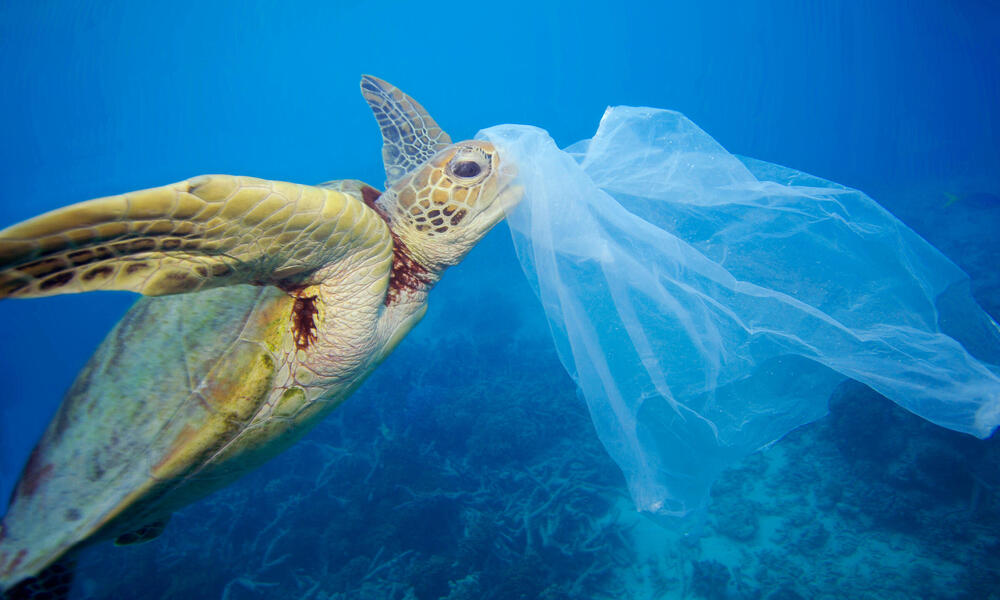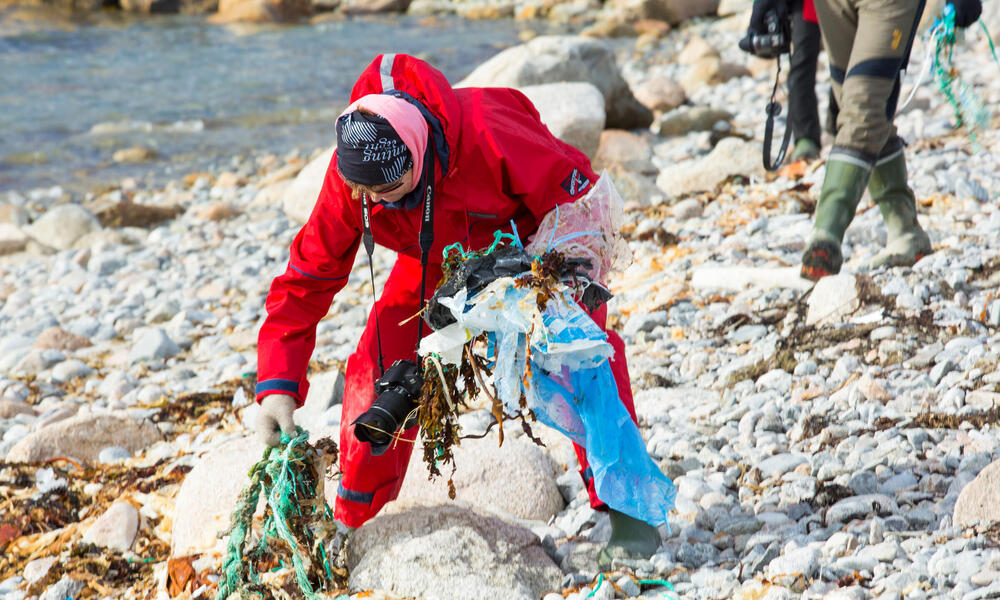All You Can Eat Crab Legs Near Orlando Florida
What do sea turtles eat? Unfortunately, plastic numberless.

Would you rather choice a fight with a jellyfish or a plastic bag?
For sea turtles, this question should be simple. Their scales protect them from the worst of a jellyfish's venom, and the resulting meal is both tasty and nutritious. But a unmarried slice of plastic tin can exist deadly.
The problem is that sea turtles don't know what plastic is, and they don't get to choose.
What do ocean turtles naturally eat?
At that place are seven species of sea turtles establish in the world'due south oceans today, and they each have unlike dietary preferences.
- Loggerhead:Hatchlings are omnivores (meaning they swallow both animals and plants) but adults are carnivores, favoring venereal, whelks, and conchs.
- Green: Fully grown sea turtles are herbivores and like to hang effectually coral reefs to scrape off seagrass and algae. Hatchlings, however, are omnivorous.
- Hawksbill: The bird-similar neb that gives them their name allows hawksbills to admission cracks on coral reefs to attain ocean sponges, which are pretty much all these fussy eaters want.
- Leatherback: Leatherback turtles are oft known as gelatinivores, significant they only eat invertebrates such as jellyfish and sea squirts.
- Flatback: This species will eat everything from seaweed to shrimp and crabs.
- Kemp'south ridley:Meat is the merely thing on the card for the Kemp's ridley—with a strong preference for crab.
- Olive ridley: Another omnivorous species that eats jellies, ocean cucumbers, fish, and a broad variety of other plants and animals.
The earliest ancestors of these seven species appeared on World effectually 220 million years agone, and today'south sea turtles take evolved to hunt successfully beneath the waves.
That was until plastic came along.
Why do sea turtles swallow plastic?
Plastic has only been mass-produced since the 1940s, but it's having a devastating impact on sea turtles.
Research suggests that 52% of the earth'south turtles accept eaten plastic waste matter. The reasons are simple: a floating plastic bag tin can await like a lot of jellyfish, algae, or other species that make upwardly a big component of the sea turtles' diets.
All sea turtle species are at risk from plastic.
The carnivorous loggerhead and mainly establish-eating green turtle both were shown to exist consuming plastic in alarming quantities, according to a study from the University of Tokyo.
In fact, loggerheads ate plastic 17% of the fourth dimension they encountered it, likely mistaking information technology for jellyfish. This figure rocketed to 62% for green turtles probably on the chase for algae.
Yet, it's not only ingesting plastic that causes problems for turtles. Entanglement in abased angling nets tin easily kill them through drowning or preventing individuals from escaping predators or hunting.
Tragically, the aggregating of plastics at key nesting beaches means that baby turtles are among the virtually at take a chance from plastic entanglement, preventing them from reaching the bounding main.
What happens to sea turtles that eat plastics?
The outlook for turtles that swallow plastic is dour: for 22% ingesting just one plastic item can be a death penalty. Sharp plastics can rupture internal organs and bags can cause intestinal blockages leaving turtles unable to feed, resulting in starvation.
Even if they survive, consuming plastic can make turtles unnaturally buoyant, which can stunt their growth and atomic number 82 to slow reproduction rates.
What can I do?

- In This Story:
- Pollution
- Body of water Habitat
- Sea Turtle
- Hawksbill Turtle
- Loggerhead Turtle
- Leatherback Turtle
- Green Turtle
- Olive Ridley Turtle
- Oceans
mccallburnournswes.blogspot.com
Source: https://www.worldwildlife.org/stories/what-do-sea-turtles-eat-unfortunately-plastic-bags
Post a Comment for "All You Can Eat Crab Legs Near Orlando Florida"